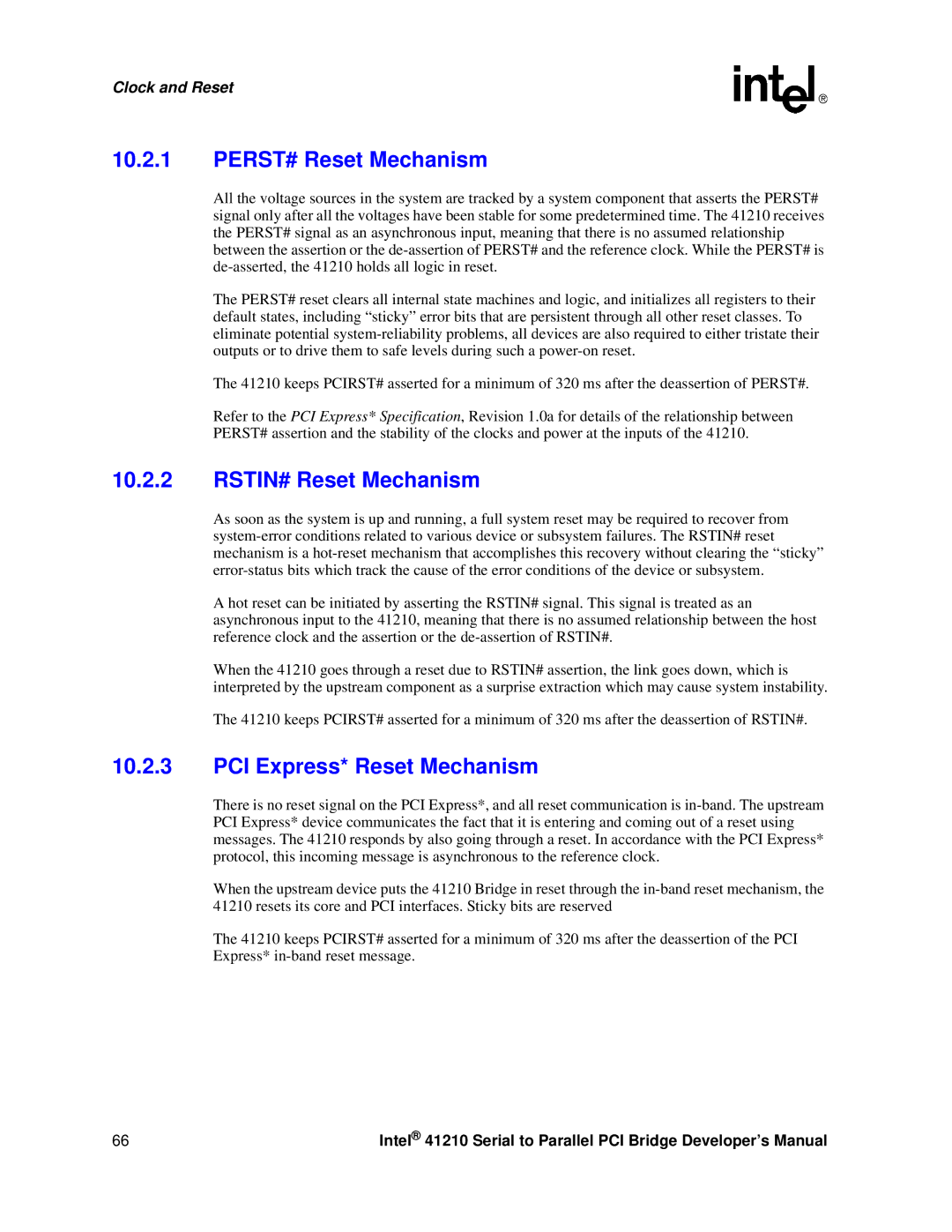Clock and Reset
10.2.1PERST# Reset Mechanism
All the voltage sources in the system are tracked by a system component that asserts the PERST# signal only after all the voltages have been stable for some predetermined time. The 41210 receives the PERST# signal as an asynchronous input, meaning that there is no assumed relationship between the assertion or the
The PERST# reset clears all internal state machines and logic, and initializes all registers to their default states, including “sticky” error bits that are persistent through all other reset classes. To eliminate potential
The 41210 keeps PCIRST# asserted for a minimum of 320 ms after the deassertion of PERST#.
Refer to the PCI Express* Specification, Revision 1.0a for details of the relationship between PERST# assertion and the stability of the clocks and power at the inputs of the 41210.
10.2.2RSTIN# Reset Mechanism
As soon as the system is up and running, a full system reset may be required to recover from
A hot reset can be initiated by asserting the RSTIN# signal. This signal is treated as an asynchronous input to the 41210, meaning that there is no assumed relationship between the host reference clock and the assertion or the
When the 41210 goes through a reset due to RSTIN# assertion, the link goes down, which is interpreted by the upstream component as a surprise extraction which may cause system instability.
The 41210 keeps PCIRST# asserted for a minimum of 320 ms after the deassertion of RSTIN#.
10.2.3PCI Express* Reset Mechanism
There is no reset signal on the PCI Express*, and all reset communication is
When the upstream device puts the 41210 Bridge in reset through the
The 41210 keeps PCIRST# asserted for a minimum of 320 ms after the deassertion of the PCI Express*
66 | Intel® 41210 Serial to Parallel PCI Bridge Developer’s Manual |
